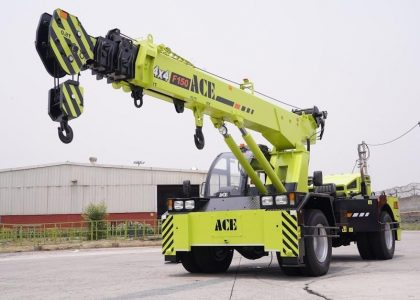Fire Drill Log Sheet PDF⁚ A Comprehensive Guide
A Fire Drill Log Sheet PDF is a crucial document for any organization or business that conducts fire drills. These documents are essential for documenting the details of each drill, ensuring compliance with safety regulations, and providing valuable insights for improving emergency preparedness. This comprehensive guide will explore the purpose, importance, legal requirements, key elements, and best practices associated with fire drill log sheets.
What is a Fire Drill Log Sheet?
A Fire Drill Log Sheet is a standardized form designed to meticulously record the details of fire drills conducted within a building or facility. It acts as a comprehensive record-keeping tool, capturing essential information about each drill, including the date, time, participants involved, evacuation duration, and any observations or feedback gathered. This document serves as a valuable reference for evaluating the effectiveness of fire drills and identifying areas for improvement in emergency preparedness procedures. Its purpose is to ensure that the organization maintains a clear and detailed history of fire drills conducted, demonstrating their commitment to safety and compliance with relevant regulations.
Purpose and Importance of Fire Drill Log Sheets
Fire Drill Log Sheets serve a critical purpose in ensuring the safety and well-being of individuals within a building or facility. These logs provide a detailed record of fire drills, allowing organizations to analyze the effectiveness of their emergency plans and identify areas for improvement. By documenting the time it takes to evacuate, the number of participants, and any observations made during drills, organizations can gain valuable insights into their preparedness. These logs also serve as a legal requirement for many businesses and institutions, demonstrating compliance with fire safety regulations and demonstrating a commitment to the safety of their occupants. Furthermore, they provide a clear and transparent record for regulatory bodies, demonstrating that the organization is taking necessary steps to ensure the safety of their employees, visitors, and residents.
Legal Requirements and Regulations
Fire drill log sheets are often mandated by legal requirements and regulations to ensure the safety of individuals within a building or facility. These regulations vary depending on the jurisdiction and type of occupancy, but generally require organizations to conduct regular fire drills and maintain accurate records of these drills. For example, the Clery Act in the United States requires colleges and universities to maintain records of crime logs, including fire drills, and make them available to the public. In Canada, the Safe Schools Regulation mandates that schools conduct fire drills 10 times during the school year. These legal requirements and regulations highlight the importance of fire drill log sheets as a critical component of fire safety compliance, ensuring that organizations are taking the necessary steps to protect the lives and well-being of their occupants.
Key Elements of a Fire Drill Log Sheet
A comprehensive fire drill log sheet should include several key elements that provide a detailed record of the drill. These elements are essential for evaluating the effectiveness of the drill, identifying areas for improvement, and demonstrating compliance with safety regulations. Key elements typically include the date and time of the drill, the number of participants, the evacuation time, and observations and feedback. The date and time of the drill establish a clear record of when the drill took place, while the number of participants indicates the scope of the drill and the number of people involved in the evacuation process. The evacuation time provides a benchmark for measuring the efficiency of the evacuation, while observations and feedback offer insights into the effectiveness of the drill and areas for improvement. By incorporating these key elements, fire drill log sheets become valuable tools for ensuring the safety of individuals within a building or facility.
Date and Time of Drill

The date and time of the drill are essential components of a fire drill log sheet. They provide a clear record of when the drill took place, allowing for easy tracking and analysis of drill frequency and timing. This information is particularly valuable for organizations that are required to conduct regular fire drills, such as schools, hospitals, and businesses. Recording the date and time also allows for the identification of any potential trends or patterns in the effectiveness of drills. For example, if a drill conducted during a specific time of day consistently results in longer evacuation times, it may indicate the need for adjustments to procedures or additional training. Accurate documentation of the date and time of each fire drill ensures a comprehensive record of safety preparedness and compliance with regulations.

Number of Participants
The number of participants in a fire drill is crucial for determining the effectiveness of the evacuation process. This information helps assess whether the evacuation plan is adequate for the size of the building and the number of people present. Recording the number of participants allows for comparisons across different drills, identifying any potential discrepancies or areas where improvements are needed. For instance, if a drill conducted during a busy period results in a significantly longer evacuation time, it may suggest the need for additional exit points or more efficient crowd management strategies. By accurately recording the number of participants, organizations can ensure that their evacuation plans are tailored to the specific needs of their facilities and the number of people they accommodate.
Evacuation Time
The evacuation time is a critical factor in assessing the effectiveness of a fire drill and the overall safety of a building. This metric measures the time it takes for all participants to safely evacuate the building from the moment the alarm is sounded. The evacuation time should be recorded meticulously and compared against previous drills to identify any trends or areas for improvement. For example, if the evacuation time consistently exceeds a predetermined threshold, it may indicate the need for adjustments to the evacuation plan, such as adding more exit points or streamlining the process for people with disabilities. By meticulously documenting the evacuation time, organizations can gain valuable insights into the efficiency of their safety procedures and make informed decisions to enhance the safety of their facilities and occupants.
Observations and Feedback
The “Observations and Feedback” section of a fire drill log sheet is a critical area for capturing insights and identifying areas for improvement. During a fire drill, it’s important to note any challenges, delays, or issues encountered during the evacuation process. This could include identifying congested areas, inadequate signage, or difficulties with specific groups, such as individuals with disabilities. Additionally, feedback from participants, including staff and students, should be documented. This feedback can provide valuable insights into the effectiveness of the drill and identify areas where communication, training, or procedures could be enhanced. By carefully recording these observations and feedback, organizations can gain valuable data for refining their fire safety plans, ensuring that future drills are more effective and efficient in protecting the lives and well-being of all occupants.
Fire Drill Log Sheet Templates and Examples
Finding readily available templates and examples for fire drill log sheets can streamline the process of creating and maintaining your own documentation. Numerous online resources offer free downloadable templates, allowing you to customize them to fit your specific needs. These templates often include sections for recording the date and time of the drill, the number of participants, the evacuation time, observations, and feedback. Examples of fire drill log sheets can also be found in various industry publications and safety guides, providing visual representations of how these documents are structured and what information is typically included. By utilizing these readily accessible resources, organizations can save time and effort while ensuring their fire drill documentation meets the necessary standards and requirements.
Software for Fire Drill Log Sheet Management
Streamlining the process of creating, managing, and storing fire drill log sheets can be significantly enhanced through the use of specialized software. These applications offer various features designed to simplify the documentation process. Some software solutions allow for the creation of digital log sheets that can be filled out electronically, reducing the need for paper-based forms. They often provide templates and customizable options to ensure compliance with specific regulations or industry standards. Moreover, these software programs can facilitate secure storage and retrieval of log sheets, ensuring easy access and compliance with record-keeping requirements. Additionally, some software solutions may offer automated reminders for scheduled drills, reducing the risk of missed or forgotten events. By leveraging such software, organizations can streamline their fire drill documentation procedures, improve efficiency, and ensure compliance with relevant safety regulations.
Best Practices for Conducting Fire Drills
Effective fire drills are essential for ensuring the safety of occupants in the event of a real fire. To maximize the effectiveness of these drills, it is crucial to adhere to best practices. Conducting drills at various times of the day is crucial, as different situations may arise during different periods. This helps employees or students become accustomed to evacuating under different circumstances. Furthermore, it is important to incorporate realistic scenarios into the drills, simulating potential fire hazards and challenging occupants to respond appropriately. Regular drills ensure that everyone is familiar with evacuation routes, assembly points, and emergency procedures. Additionally, conducting drills during nap time for childcare facilities or other situations where individuals may be sleeping is particularly important. By adhering to these best practices, organizations can ensure that their fire drills are comprehensive, realistic, and ultimately contribute to a safer environment for everyone.
Tips for Effective Fire Drill Log Sheet Documentation
Accurate and thorough documentation of fire drills is essential for demonstrating compliance with safety regulations, identifying areas for improvement, and ensuring accountability. To ensure effective fire drill log sheet documentation, it is important to maintain a clear and concise format. Include essential details such as the date and time of the drill, the number of participants, the evacuation time, and any observations or feedback. Utilizing a standardized template can streamline the process and ensure consistency. Additionally, it is beneficial to include specific details about the scenario simulated during the drill, such as the location of the simulated fire or the type of emergency response required. This helps to provide a more comprehensive record and facilitates analysis of drill performance. Furthermore, it is crucial to ensure that all relevant personnel have access to the fire drill log sheets, including safety officers, management, and employees. This promotes transparency and facilitates effective communication regarding safety practices.





